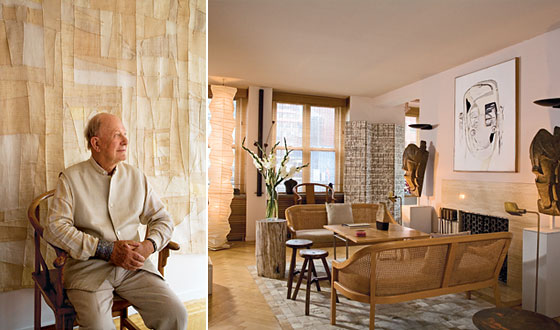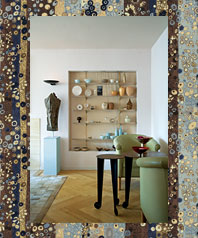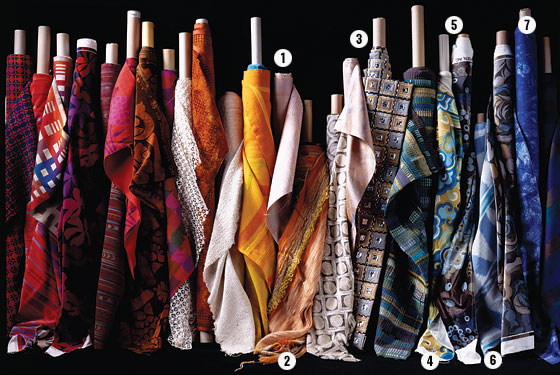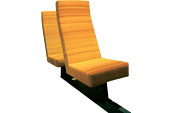
Today, no one blinks twice when Dries Van Noten trots cross-dyed ikat down the runway or an upscale fabric house unveils its latest African-inspired pattern. In this postmodern, polyglot, politically conscious era, it’s hard to recall a time when ethnic design influences even seemed novel. That mind-set owes a huge debt to the visionary weaver Jack Lenor Larsen. His enlightened approach toward craft traditions resulted in avant-garde fabrics that both defined modern textiles and gave credit to its ethnographic sources.
It all started humbly enough. “Fifty years ago, modern fabrics weren’t readily available,” says Larsen, in his small, chic Manhattan apartment. After getting an M.F.A. from Cranbrook, Larsen started his eponymous firm in New York in 1952 because the company he wanted to work for—Knoll—wouldn’t hire him. “Mrs. Knoll decided I was too individual to fit in her mold,” he says, chuckling. But he was quickly successful. “Marcel Breuer liked my handwoven textiles, so he started using them. All the larger firms looked to see what Marcel was doing, and one thing led to another.”

Soon, he was collaborating with artisans across the globe to make sophisticated fabrics that retained a hand-spun, handwoven appearance and had clients like Louis Kahn, Frank Lloyd Wright, Edward Larabee Barnes, and Gordon Bunshaft, who commissioned him to weave gilded linen curtains for Lever House. Larsen also designed beautiful but durable fabrics for Braniff and Pan Am jets, as well as the interiors of performance spaces like the one at Wolf Trap in Virginia.
Larsen was also something of a cultural attaché. “Under the aegis of the U.S. State Department, I worked throughout Southeast Asia in the late fifties to help Taiwan and Vietnam achieve exports and jobs,” he recalls. “I was invited to Haiti, Morocco, and Colombia and, ultimately, some 90 countries.” While globe-trotting in the name of cultural promotion, Larsen amassed a mind-blowing collection of textiles, embroideries, and crewelwork, which served as inspiration for his own designs; many are housed at LongHouse Reserve, Larsen’s legendarily quirky Hamptons house (its famous gardens are open to the public).
Even though he’s identified with the spare, cool aesthetic of mid-century modern, Larsen is a believer in softness. “Hard-core modernists tried to be without luxury,” he says. “But a lot of luxuries were quite beautiful, or useful, or pleasant. Being practical is good, but it’s not all of life.”

1. Boxwood, from a series of printmaking experiments in Thailand on handwoven silk.
2. Swazi Stripe, mohair woven in Swaziland for Wolf Trap National Park for the Performing Arts in Virginia.
3. Magnum, embroidered Mylar with mirrors, made for the Arizona Opera’s stage curtain in Phoenix Symphony Hall.
4. Happiness, a cotton print inspired by Ching Dynasty robes.
5. Primavera, a velvet inspired by Gustav Klimt.
6. An unnamed ikat woven in Thailand.
7. Leaves of Grass, a batik on velvet done by hand in Larsen’s studio.
Profession: Textile Designer
Peak: 1960 to 1980
Essential Design: Braniff Chairs

(Photo: Courtesy of Cowtan & Tout Archive)